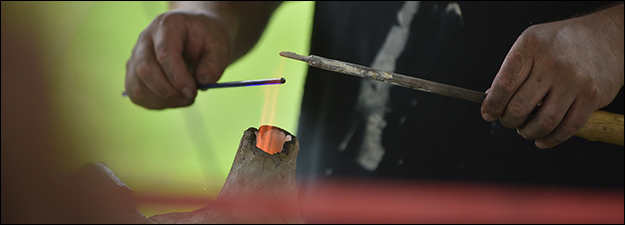Medieval Settlement and Landscape in Modern Ireland
Sponsoring Organization(s)
Special Session
Organizer Name
Vicky McAlister, Jennifer L. Immich
Organizer Affiliation
Southeast Missouri State Univ., Metropolitan State Univ. of Denver
Presider Name
Terry Barry
Presider Affiliation
Trinity College, Univ. of Dublin
Paper Title 1
Caherconnell, County Clare, Western Ireland: From Medieval to Modern Settlement Landscape
Presenter 1 Name
Michelle Comber
Presenter 1 Affiliation
National Univ. of Ireland-Galway
Paper Title 2
Becoming a Castle in a "National Landscape Strategy for Ireland" World: Exploring the Concept of Meaning in Landscape Archaeology
Presenter 2 Name
Jennifer L. Immich
Paper Title 3
Chicken Coop, Pigeon Loft, or Tower House? Chasing Medieval Settlement and Landscape Features in the Present Day
Presenter 3 Name
Vicky McAlister
Paper Title 4
Transhumance in Later Medieval and Early Modern Ireland: Integrating Archaeological and Historical Sources in the Study of Pastoral Farming
Presenter 4 Name
Eugene Costello (Recipient of the NUI, Galway's Sieg & Dunlop Travel Bursary)
Presenter 4 Affiliation
National Univ. of Ireland-Galway
Start Date
12-5-2016 10:00 AM
Session Location
Schneider 1265
Description
This session on the medieval settlements and landscapes of Ireland engages with a dynamic interdisciplinary sub-field that has been undergoing reexamination in recent years. Medieval settlement and landscape studies have combined theories and techniques from a variety of disciplines, most overtly those of history, archaeology and geography. These academic fields are represented by the papers in the session. Interdisciplinarity has to some extent become something of a buzzword in medieval studies, but it is an integral aspect of any successful academic study into settlements and landscapes. Particularly in Ireland, the focus of this session, the poor survival rate of medieval historical documents due to loss and destruction has ensured that many scholars have been inventive in their research strategies. A significant question tackled by this session therefore is: How do these intellectual approaches inform one another?
Also debated in the session is the matter of context. It is contended that the methodologies employed by academics in the area provide an unparalleled lens through which to examine the actions and motivations of an understudied population. Settlement and landscape studies often take a 'bottom up' approach to look at the impact wide sections of medieval society had on their physical context. They provide necessary background upon which to contextualise events and changes from the middle ages. Consequently, the papers consider such topics as the impacts of pastoral agriculture, people’s exploitation of riverine resources, and contact between ethnic groups.
Finally, as stated in the session title, the papers consider the place of medieval landscapes in the modern world. This subject is of serious scholarly and public concern, especially in Ireland. In the last decade Irish investigations have been influenced by the needs of rescue archaeology; today, with far-reaching economic limitations, heritage preservation is a central issue for all practitioners in the field. On the flip side, it provides a means of interaction with the public. The papers discuss contemporary concerns, including: the shifting value of settlement sites over time up to today’s EU “strategy vision”; the importance of integrating heritage demands with the interests of the modern population; and methods for identifying historic landscape uses in the present-day landscape.
Victoria McAlister
Medieval Settlement and Landscape in Modern Ireland
Schneider 1265
This session on the medieval settlements and landscapes of Ireland engages with a dynamic interdisciplinary sub-field that has been undergoing reexamination in recent years. Medieval settlement and landscape studies have combined theories and techniques from a variety of disciplines, most overtly those of history, archaeology and geography. These academic fields are represented by the papers in the session. Interdisciplinarity has to some extent become something of a buzzword in medieval studies, but it is an integral aspect of any successful academic study into settlements and landscapes. Particularly in Ireland, the focus of this session, the poor survival rate of medieval historical documents due to loss and destruction has ensured that many scholars have been inventive in their research strategies. A significant question tackled by this session therefore is: How do these intellectual approaches inform one another?
Also debated in the session is the matter of context. It is contended that the methodologies employed by academics in the area provide an unparalleled lens through which to examine the actions and motivations of an understudied population. Settlement and landscape studies often take a 'bottom up' approach to look at the impact wide sections of medieval society had on their physical context. They provide necessary background upon which to contextualise events and changes from the middle ages. Consequently, the papers consider such topics as the impacts of pastoral agriculture, people’s exploitation of riverine resources, and contact between ethnic groups.
Finally, as stated in the session title, the papers consider the place of medieval landscapes in the modern world. This subject is of serious scholarly and public concern, especially in Ireland. In the last decade Irish investigations have been influenced by the needs of rescue archaeology; today, with far-reaching economic limitations, heritage preservation is a central issue for all practitioners in the field. On the flip side, it provides a means of interaction with the public. The papers discuss contemporary concerns, including: the shifting value of settlement sites over time up to today’s EU “strategy vision”; the importance of integrating heritage demands with the interests of the modern population; and methods for identifying historic landscape uses in the present-day landscape.
Victoria McAlister

